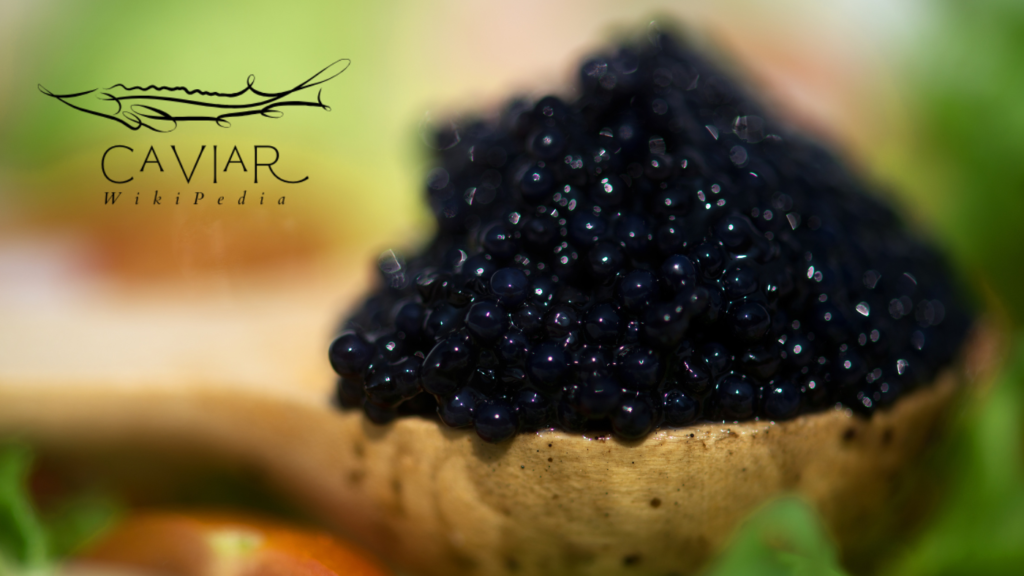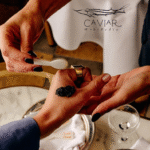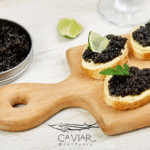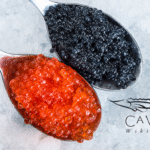Caviar is a fancy food made from sturgeon fish eggs. It’s known as a luxury treat. For a long time, it came from places like Russia and Iran. But now, Africa is starting to make caviar too.
This article is about how caviar is growing in Africa. We’ll talk about where it’s made, why it’s special, and what might happen next.
What Is Caviar?
Caviar is tiny eggs from sturgeon fish. They are salted to taste good. People love caviar because it’s rare and feels special. It’s often served on crackers or toast at fancy events.
Caviar is healthy too. It has things like omega-3, vitamins, and minerals that help your heart and brain.

Caviar Around the World
Years ago, most caviar came from the Caspian Sea. But fishing too much hurt the sturgeon. So, people started farming sturgeon instead. Now, countries like China, Italy, and France make a lot of caviar. The world loves caviar, and the market is growing fast. Experts say it could be worth $560 million by 2025.
Caviar in Africa Begins
Africa didn’t make caviar until recently. The first place to try was Madagascar. A company called Rova Caviar started in 2017. They farm sturgeon in a lake called Mantasoa. It’s a cool, clean place perfect for sturgeon. Now, Madagascar is the only country in Africa making caviar.
How Caviar Is Made in Madagascar
Making caviar takes time. Sturgeon fish grow slowly. Female fish need 6 to 10 years to make eggs. At Rova Caviar, they raise different kinds of sturgeon. Here’s how they do it:
- Young fish start in tanks on land.
- When they’re bigger, they move to nets in the lake.
- Workers check the fish to see if they have eggs.
- They gently take the eggs without hurting the fish.
- The eggs are cleaned, salted, and packed in tins.
Everything is done carefully to make sure the caviar tastes great.
Growing More Caviar
Rova Caviar is making more caviar every year. In 2019, they made 4 tons. In 2020, it dropped to 3 tons because of Covid-19. But then it went up again. In 2021, they made 9 tons. In 2022, it was 8 tons. By 2023, they produced 11 tons. This shows caviar in Africa is getting bigger.
Why Madagascar Works
Madagascar is a good place for caviar. The lake is cool all year, so sturgeon grow faster than in cold countries. The water is clean, and the farm is careful about the environment. They check the lake to make sure it stays healthy. This helps the fish and the people living nearby.
Selling Caviar to the World
Rova Caviar sells to fancy places like hotels and restaurants. You can find their caviar in Paris, Mauritius, and Seychelles. Chefs love it because it tastes smooth and nutty. Some caviar costs a lot, like $12,000 for one kilogram! People all over the world want Caviar Africa because it’s new and exciting.

Challenges They Faced
Starting a caviar farm wasn’t easy. At first, people didn’t think it could work in Africa. Sturgeon usually live in cold places. But the Rova team tried anyway. They brought sturgeon eggs from Russia in 2013. It took years to grow the fish and make caviar. They had to be patient and work hard.
Helping the Community
Rova Caviar does more than make caviar. They help people in Madagascar. The farm gives jobs to about 300 workers. Most come from nearby towns. They get training, health care, and even classes to learn reading. The farm also teaches about family planning. This makes life better for many families.
Caring for the Environment
The farm cares about nature too. They keep the lake clean and test the water every year. They plant trees to protect the land. They also follow rules to make sure their farm is safe for the environment. This helps the sturgeon and the lake stay healthy for a long time.
Caviar Africa’s Future
The future looks good for caviar in Africa. Rova Caviar wants to make even fancier caviar, like Beluga. This kind takes longer to grow but sells for more money. They’re also growing their farm to make more caviar. If they keep going, Madagascar could be a big name in caviar.
Could Other Countries Join?
Right now, Madagascar is the only African country making caviar. But others might try. South Africa had an idea for a sturgeon farm in 2016. It’s not clear if it has started yet. If it does, it could make caviar in Africa even bigger. Other countries might see Madagascar’s success and want to try too.
Why Caviar in Africa Matters
Caviar in Africa is special because it’s new. It shows Africa can make luxury foods for the world. It brings money to Madagascar and creates jobs. It also proves that with hard work, new ideas can grow anywhere. Caviar Africa is a story of trying something different and succeeding.
Conclusion
Caviar in Africa is a growing market, and Madagascar is leading the way. Rova Caviar started small but now sends caviar all over the world. They face challenges but keep growing.
They help people and care for the environment, too. With plans for fancier caviar and maybe new farms in other countries, Caviar Africa has a bright future. It’s exciting to see where this market will go next.







